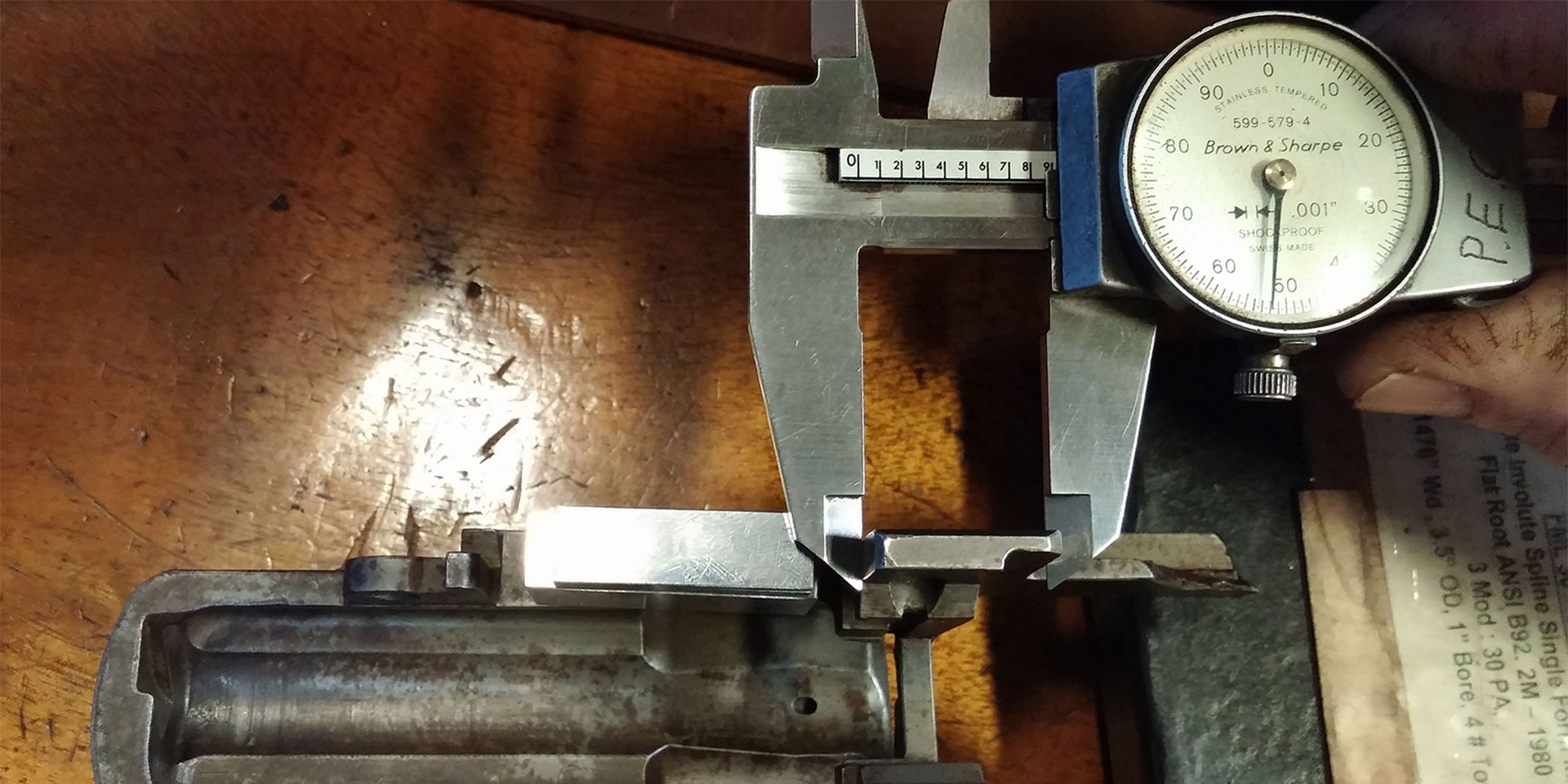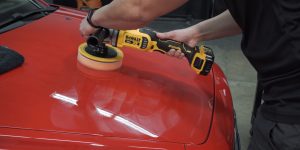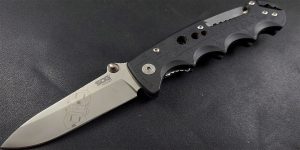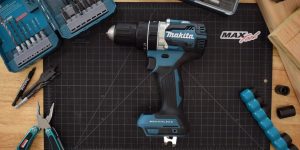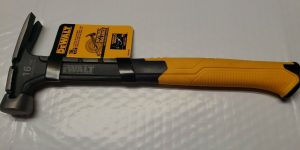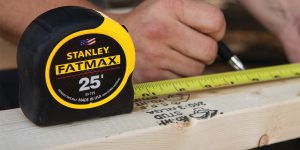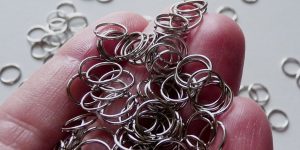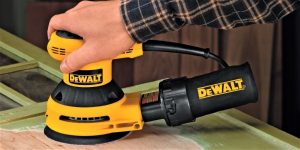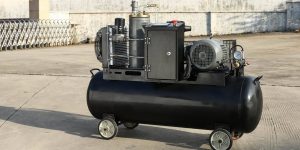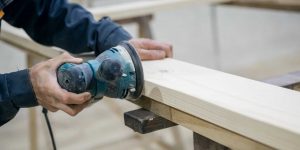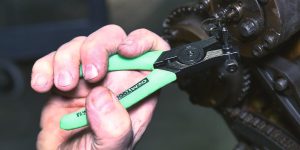A dial caliper is a clockwise tool with a rack and gear used to measure objects’ linear dimensions, thickness, or diameter. Machinists, technicians, woodworkers, and other specialists find such a tool extremely versatile and helpful – it makes quick, straightforward, error-free measurements.
In addition, the best dial calipers are durable, precise, straightforward to use and read. With a bit of practice, you’ll be able to use this unit in both dry and damp conditions comfortably.

But with all the different models and brands, how do you know which one is right for you? The market offers plenty of options, and the selection process may be nerve-racking and time-consuming. To take this burden off your shoulders, I’ve created this dial caliper review along with a comprehensive buyer’s guide. Here, you’ll find only high-quality models, which I carefully tested and compared. So, read on to buy the most suitable option for you!
Best dial calipers comparison table
| Name | Range | Resolution | Accuracy | Review |
|---|---|---|---|---|
| Brown & Sharpe 599-579-4best overall | 0-6″ | 0.001″ | ±0,001″ | Review |
| Anytime Tools 203185budget | 0-6″ | 0.001″ | ±0,001″ | Review |
| Starrett 1202F-6with fractional scale | 0-6″ | 0.01″ | ±0,001″ | Review |
Best dial calipers reviews
Brown & Sharpe 599-579-4 – best overall

American-made The Brown & Sharpe 599-579-4 dial caliper is a high-precision tool for measuring linear distances. It measures the exterior and internal diameters, as well as the depth of any step between 0 and 6 inches.
The caliper has a dial graduated in increments of 0.001 inches, and each revolution of the dial corresponds to 0.100 inches. This enables extremely precise measurements to be done.

The caliper is comprised of hardened stainless steel, which makes it corrosion-resistant and long-lasting. In addition, the dial incorporates a lock screw that keeps the moving jaw in place, ensuring accurate measurements. Finally, this caliper incorporates a depth rod into the racking – even a professional-grade Anytime Tools 203185 can’t boast such a feature.
Brown & Sharpe 599-579-4 is the overall best dial caliper available on today’s market. It’s a super sturdy, highly versatile tool that offers unrivaled performance at a very reasonable price!
Key specs
- Range, inch: 0-6
- Resolution, inch: 0.001
- Accuracy, inch: ±0,001
Pros
- Durable and long-lasting
- Versatile
- Provides error-free measurements
- Easy to read
- Conforms to DIN 862 requirements
Cons
- Poor packaging
- It doesn’t have a thumb roller; however, it features a raised section that performs just as well.
Anytime Tools 203185 – best budget

Anytime Tools 203185 is a professional-grade dial caliper that can be used for various purposes. What makes it stand out against the strongest competitors, e.g., Brown & Sharpe 599-579-4, is its ability to read in both measurement systems – decimal inch and metric. Actually, very few calipers have this feature! So, if you often work with both systems, such a caliper will save you lots of time!

You can use the 203185 to measure the interior, outside, step, and depth parameters; it has a graduated scale of .001″/.02mm. Next, the caliper is made of hardened stainless steel, so it’s durable and can withstand a lot of wear and tear. It also features a shockproof mechanism, improving its accuracy and keeping the unit for many years of continuous use. Last but not least, this instrument is available in three different sizes: 6″, 8″, and 12″.
Interested in cheap yet super-efficient dial calipers? Anytime Tools 203185 has got you covered! It boasts an appearance and characteristics that can rival more expensive products out there!
Key specs
- Range, inch: 0-6
- Resolution, inch: 0.001
- Accuracy, inch: ±0,001
Pros
- Sturdy
- Great for welding and close-tolerance work
- Perfectly flat & parallel jaws
- Smooth thumbwheel
- Budget-friendly
Cons
- Plastic lens
- The linear scale stamp is at the end of the unit, which is quite awkward.
Starrett 1202F-6 – with fractional scale

Founded in 1880, Starret is a well-trusted brand that produces highly-accurate and quality instruments. And this 6-inch dial caliper is no exception!
The 1202F-6 is a high-end model – it’s much sturdier than conventional gear! This caliper’s fit and feel make it a true pleasure to use!

The caliper uses inches to measure depth, inner/outside dimensions, and steps. It combines a decimal white dial on the inner wheel and a fractional yellow dial on the outer wheel, making it ideal for woodworkers. Both dials are straightforward to read, even in darker environments.
While testing, I made no adjustments to the dial because the indicator needle repeatedly returns to zero. Additionally, I could easily use the instrument with just one hand, thanks to the smooth thumb roller.
If you are hunting for a premium-quality, smooth, and precise fractional dial caliper, you can end your search here. This instrument won’t disappoint you!
Key specs
- Range, inch: 0-6
- Resolution, inch: 0.01
- Accuracy, inch: ±0,001
Pros
- Well-made
- Smooth and straightforward to operate
- Accurate – can work to 1/64″ or even to 1/128″
- Built-in depth rod
- Sturdy carrying case
Cons
- Heavier than traditional dial calipers
- Are not American-made but remains a high-quality product
- Pricey
Starrett 3202-8

Starrett 3202-8 is a versatile 8-inch dial caliper, excellent for many applications – machining, automotive, woodworking, metalworking, etc. It delivers quick, accurate measurement of ODs, IDs, depth and is very close to micrometer readings.
On a satin-finished bar, the 3202-8 has clear dial graduations and finely defined black graduations. The movable jaw and dial bezel are held in position by lock screws, while the adjustable bezel provides for accurate measurements.

The hardened stainless steel bar, measuring surfaces, rack, gears, and depth rod ensure longevity, as does the thumb-operated fine adjustment roll. Finally, the knife-edge contacts assure consistent accuracy, and the positive, spring-loaded double pinion anti-backlash control ensures proper functioning.
Starrett 3202-8 is a highly versatile, reliable tool from a world-recognized brand. If you are looking for these features, you won’t go wrong with this dial caliper!
Key specs
- Range, inch: 0-8
- Resolution, inch: 0.001
- Accuracy, inch: ±0,001
Pros
- Versatile – made for multiple applications.
- Smooth operation
- Accurate reading
- Great price for name brand
Cons
- Plastic but still usable case
- Manufactured in China
Mitutoyo 505-746

Mitutoyo 505-746 is a Brazilian-made top-rated dial caliper that utilizes superior materials and construction. Many experts praise this unit for being precise, well-built, and straightforward to use.
This model features a new, improved design with an easy-to-read dial that boasts large characters, unlike many other models. It offers measures in four directions: outer dimensions, inner dimensions, depth, and steps.

To obtain an accurate reading, a lock screw keeps the readout measurement and sliding jaw position. Next, the titanium nitride layer on the sliding veneer and shock-resistant feature significantly increases the instrument’s wear resistance. Plus, the hardened stainless steel contributes to the caliper’s overall durability.
While the price might seem a bit steep, the overall quality, ease of use, and accuracy are excellent with Mitutoyo 505-746. I highly recommend this product for anyone who wants to step up from plastic or no-brand steel dial calipers. You definitely won’t regret this purchase!
Key specs
- Range, inch: 0-12
- Resolution, inch: 0.001
- Accuracy, inch: ±0,0025
Pros
- Superbly made
- Comfortable design
- Extremely accurate
- Doesn’t need resetting
Cons
- Has plastic components, but it doesn’t affect the overall quality
Dial caliper buying guide
Typically, dial calipers look very similar, and as a result, determining which one is the most appropriate for you can be challenging. So, to find an ideal dial caliper for your needs, you must be aware of specific characteristics. Here they are:
Resolution and measurement range
As you understand, accuracy is required from a precision measuring instrument. For example, a dial caliper’s most frequent resolution is 0.001″ – if it doesn’t feature this resolution, don’t purchase it.
As for the measuring range, you can select from four different ranges: 4, 6, 8, 12, and 40 inches. Taking into account the range also entails considering the pricing – the bigger the range, the higher the price. You should also know that the longer the instrument, the less precise it is.
If you’re not sure which range to employ, go with the 6-inch range, which should cover the majority of caliper applications.
Dial caliper accuracy
The degree of similarity between the measurement findings and the standard is measured by accuracy. This standard unifies the definition of 1 Inch (for example) across the globe. Accuracy encompasses many factors, including repeatability, uncertainty, and traceability.
Simply said, a dial caliper’s accuracy should be at least equivalent to its resolution. For instance, if the resolution is 0.001 inches, the accuracy must be ±0.001 precision as well. Therefore, if the reading is 1.002′′, the correct reading will be between 1.001′′ and 1.003′′.
The best dial calipers always come with comprehensive info about their accuracy. If a product doesn’t have a clear description, avoid buying it! Of course, you can use such a caliper, but you’ll need to calibrate it with a gauge block from time to time.
Material of dial calipers
Dial caliper must be made of durable corrosion- and abrasion-resistant materials to perform well. Choose only stainless steel or hardened stainless steel tools.
If you do heavy-duty work, such as in a machine shop, consider a dial caliper with carbide-tipped jaws. These dial calipers are more accurate, durable, and everlasting; nevertheless, they are more expensive.
Smooth sliding
The dial caliper’s jaws move past one another, allowing contacts to go into small areas for ID checks. You’ll have a fantastic measurement experience with a high-quality dial caliper that slips smoothly. However, the smoother the gear, the pricier it is. Hence, if you want this benefit, be ready to pay extra money.
Repairment ability
Some manufacturers sell spare components for their dial calipers, so you can easily repair the broken pieces and avoid purchasing a new instrument. If this matters for you, don’t forget to check this option before picking a particular dial caliper.
What are the advantages and disadvantages of dial calipers?
Precision is one of the main advantages of utilizing a dial caliper. It may nearly always be guaranteed if the rack and pinion system is free of dirt and dust. Furthermore, the dial clearly shows measurements, making the tool considerably easier to read than a traditional Vernier caliper, though not as easy to read as its digital competitors.
Unlike a digital one, a dial caliper may be used in damp environments, although it is not waterproofed, so avoid using it in the bathroom. Furthermore, because it relies on a rack and pinion system, it does not need batteries, making it more cost-effective and lasting.
However, dial calipers have certain drawbacks as well. First, the rack and pinion system is quite fragile, and it is easy for it to get misaligned, resulting in false readings. If this occurs, it may be difficult to re-calibrate the caliper. Secondly, using a typical dial restricts the calipers to either inch or metric measurements.
How to read a dial caliper
It’s pretty simple to read a dial caliper, and it’s similar to reading a Vernier caliper. Just follow these instructions:
- Close the jaws and ensure the dial face’s pointer is tuned to 0.
- If the caliper does not get to zero, release the bezel clamp screw and adjust the bezel to 0.
- To keep the 0 sets, torque the bezel clamp screw.
- Close the jaws on the portion without using too much force.
- See the readings.
The caliper’s main scale is marked every 100 inches, which corresponds to one revolution in the inch system. Each graduation on the dial represents a fraction of an inch.

